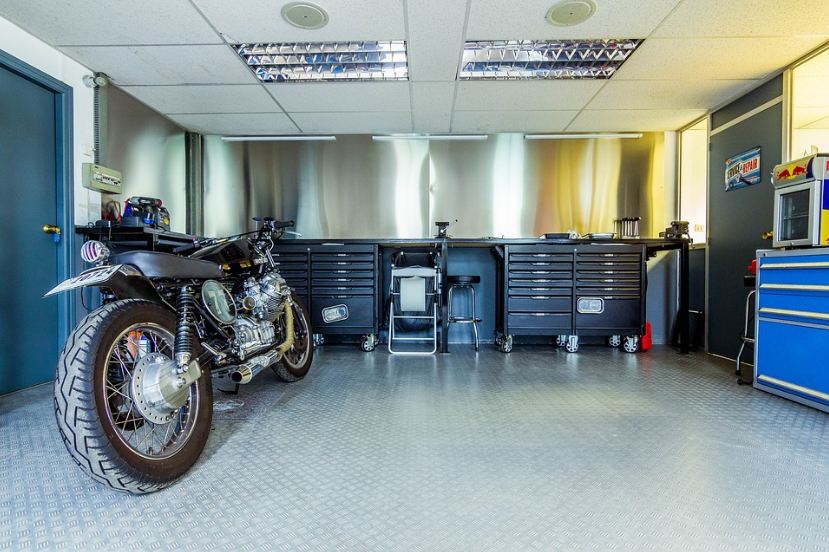Accessibility Tips for Texas State Parks

Texas State Parks offer extensive accessibility options, including free motorized track wheelchairs at select parks, beach-access wheelchairs at some coastal sites, and sensory-considerate experiences you can tailor to your needs. You'll find ADA-compliant trails, accessible kayak launches with transfer benches, and reservable adaptive equipment at various locations.
Make advance reservations during peak seasons, especially for popular parks and equipment. Display your disability placard for accessible parking (note: a placard does not automatically waive park entry fees). Discover how these accommodations can transform your outdoor adventures throughout Texas' diverse natural landscapes.
Planning Your Visit: Accessibility Resources and Reservations
When planning a trip to Texas State Parks with accessibility needs, you'll find a range of resources designed to make your outdoor time enjoyable and inclusive. The Texas Parks and Wildlife Department (TPWD) offers free adaptive equipment at multiple locations, including all-terrain track wheelchairs, beach wheelchairs where available, and loaner items that support sensory-friendly visits.
Make advance reservations for these resources through the park's office or reservation line (procedures vary by park). Popular parks and equipment have high demand, especially during peak seasons. Track chairs are typically available for no-cost, time-limited sessions with a reservation handled by each specific park.
Consider your individual accommodation needs when booking—many parks feature accessible campsites, ADA-compliant trails, and accessible kayak/canoe launches with transfer benches. Check each park's accessibility page or contact the TPWD ADA Coordinator for details on path conditions and available features before your visit.
Adaptive Mobility Equipment Options for Different Abilities
How can you fully experience the natural beauty of Texas State Parks with mobility challenges? Texas offers several equipment options to enhance your adventure.
For versatile terrain access, reserve free motorized track wheelchairs at roughly ten participating parks (for example, sites such as Brazos Bend and Dinosaur Valley). These tracked chairs navigate uneven paths for a set reservation window and often feature adjustable seating to improve comfort.
Prefer self-propelled mobility? Select parks loan GRIT Freedom Chairs (lever-drive, all-terrain wheelchairs) for independent off-road exploration. For coastal adventures, beach wheelchairs with wide tires make sand traversal possible at designated state parks or nearby municipal beaches (availability varies—call ahead).
Families with younger visitors can ask about all-terrain hiking strollers at certain parks that support smaller riders within posted height/weight limits.
Sensory-Friendly Experiences in Texas State Parks
Beyond physical access, Texas State Parks support visitors with sensory processing needs through small-group, ranger-led activities, quieter day-parts, and nature play areas where you can control the level of stimulation. When possible, choose lower-crowd hours (early mornings or weekdays) and ask staff about quiet zones or low-stimulus areas along trails and in visitor centers.
Before visiting, check if the park provides visual schedules, pre-visit information, or tips for navigating exhibits and trails. Many teams are trained in guest-centered communication, and staff can help you plan a route that minimizes noise, bright light, or congestion.
If you use tools like noise-reducing headphones, bring them along; some parks can suggest the calmest overlooks, boardwalks, or picnic loops during your time window.
Trail Accessibility Ratings and Park Recommendations
Texas State Parks offer a range of trail experiences designed to accommodate visitors with diverse mobility needs. Trails are described from easy/accessible paths with firm surfaces and minimal slopes to natural-surface routes with occasional obstacles. This lets you set expectations before you go.
When planning, consider parks with adaptive equipment (e.g., track wheelchairs) that can handle rocky or sandy sections. Lake Somerville's Honeybee Hill Trail (~0.4 mi) and Palo Duro Canyon's Pioneer Nature Trail (~0.5 mi) are approachable introductions. Brazos Bend State Park provides an excellent accessible experience on the Creekfield Lake loop, offering wildlife viewing from a level, paved or boardwalk path.
Many parks also feature accessible hunting blinds by permit and volunteer programs focused on improving accessibility. Always call ahead to verify current trail conditions and equipment availability; TPWD continually updates facilities in response to visitor feedback and weather impacts.
Beach and Water Recreation Access for All Abilities
Texas parks and coastal partners have implemented solutions to help everyone enjoy beach and water recreation. You'll find beach wheelchairs at some coastal state parks and municipal beaches, and in certain areas, seasonal mobi-mats or firm access points that improve sand crossing. Confirm availability and check-out procedures with the site you plan to visit.
Waterfront access continues to improve through accessible kayak launches with transfer benches at select parks, along with adaptive paddling programs offered seasonally. Restrooms at most developed swim areas are ADA-compliant; in some locations, outdoor rinse showers may have thresholds—staff can point you to the most accessible facilities.
Remember: display your placard for accessible parking; park fees still apply unless you qualify for a specific TPWD discount or pass.
Wildlife Viewing with Accessible Features and Equipment
Connecting with wildlife becomes even more meaningful when everyone can participate. Many parks offer accessible wildlife platforms, boardwalks, or hard-surface overlooks that accommodate mobility devices. Staff can suggest the best viewing times for waterfowl, alligators, bats, or migratory birds with minimal crowds.
Parks increasingly provide fixed viewing scopes at accessible height; bring your own binoculars if you prefer adjustable optics. For trail-based viewing, consider reserving a track chair or GRIT Freedom Chair where available, and ask rangers about short, shaded loops near lakes, wetlands, or bird blinds to reduce fatigue.
Seasonal Considerations for Visitors with Disabilities
Texas seasons directly affect accessibility. Summer heat requires hydration plans, shade breaks, and awareness of heat advisories. Spring rains can temporarily flood low-lying trails, while fall crowds increase demand for accessible equipment and campsites. Winters are generally mild, but an occasional cold snap can affect battery performance on powered mobility devices.
Reserve adaptive equipment well in advance—especially in spring and fall. Track wheelchairs at participating parks are free but limited, with reservations handled by each site. Check park alerts before traveling; seasonal conservation work or weather damage may temporarily close accessible features.
Because conditions change quickly, contact park staff a week or two before arrival to confirm trail status and any reasonable accommodations.
Navigating Camping Options with Accessibility Needs
Texas State Parks offer numerous accessible camping options tailored for visitors with mobility challenges and other disabilities. When planning, look for parks with recent upgrades (for example, Bastrop or Inks Lake), featuring wheelchair-accessible cabins and campsites with paved paths, accessible picnic tables, raised fire rings, and proximity to accessible restrooms with roll-in showers.
Request site-specific accommodations when booking. Many parks can loan all-terrain chairs to help you navigate rough ground near your site, and some offer electrical hookups to support medical or mobility devices (confirm amperage).
Make reservations at least two weeks in advance to align site features with your needs. Where available, park Wi-Fi or strong cellular coverage can help you plan in real time around weather and trail conditions.
Conclusion
Texas' state parks are steadily becoming more inclusive for everyone. Accessibility features have improved markedly—and continue to evolve. Call ahead, review park pages for specific accommodations, and don't hesitate to ask rangers for help.
Whether you're camping, wildlife watching, or enjoying water activities, you don't have to miss out on Texas' natural beauty—the outdoors truly can be for all.




